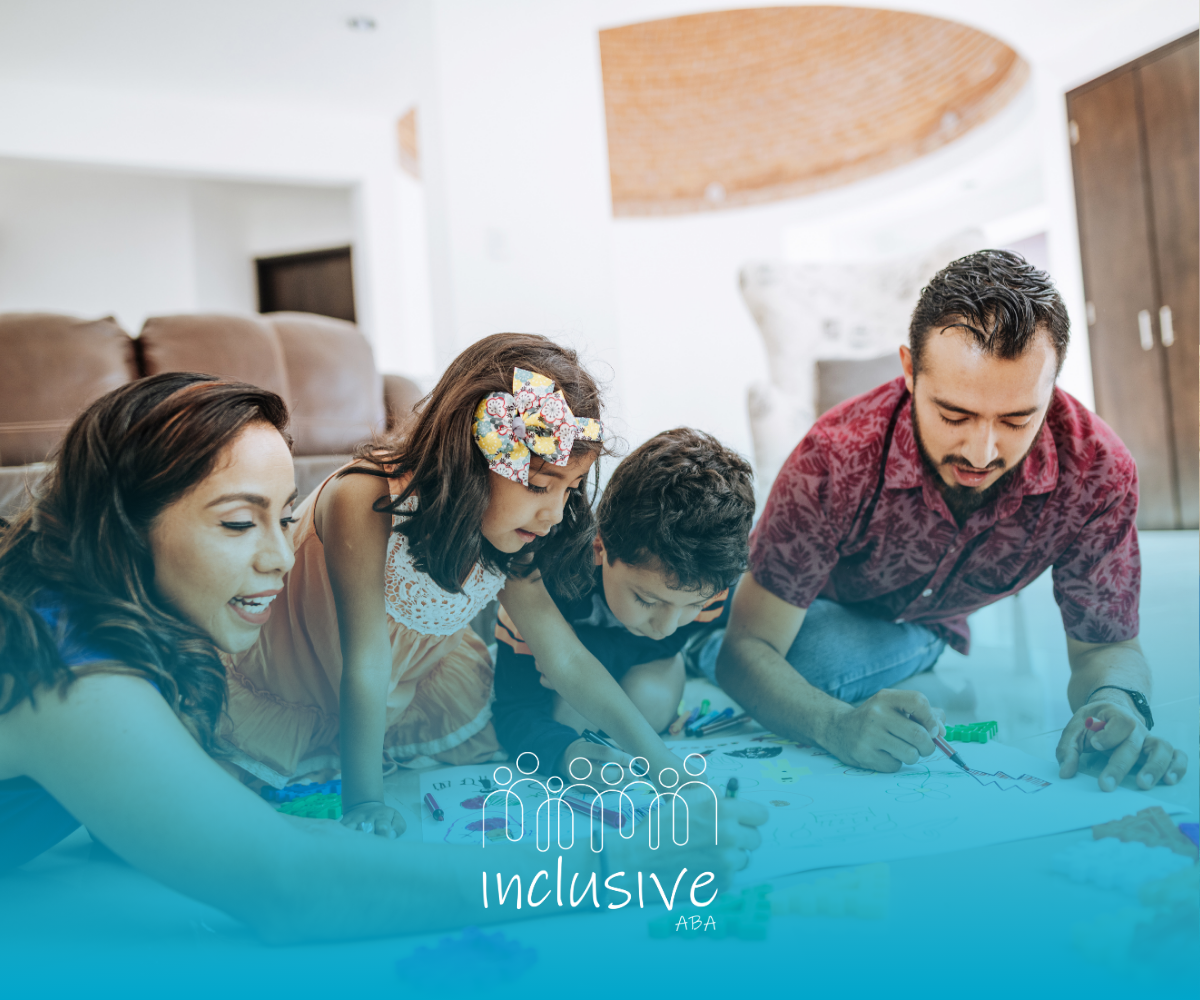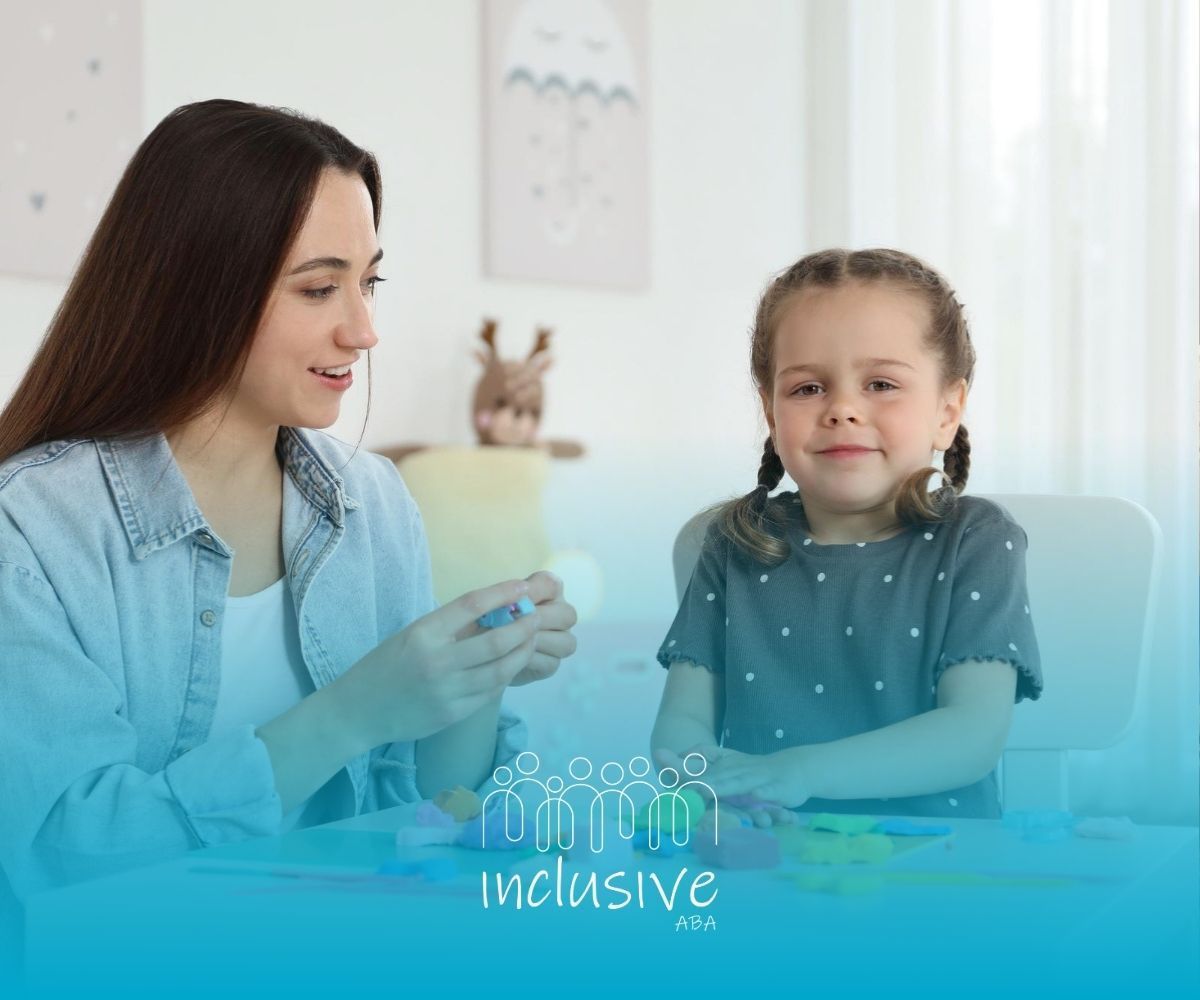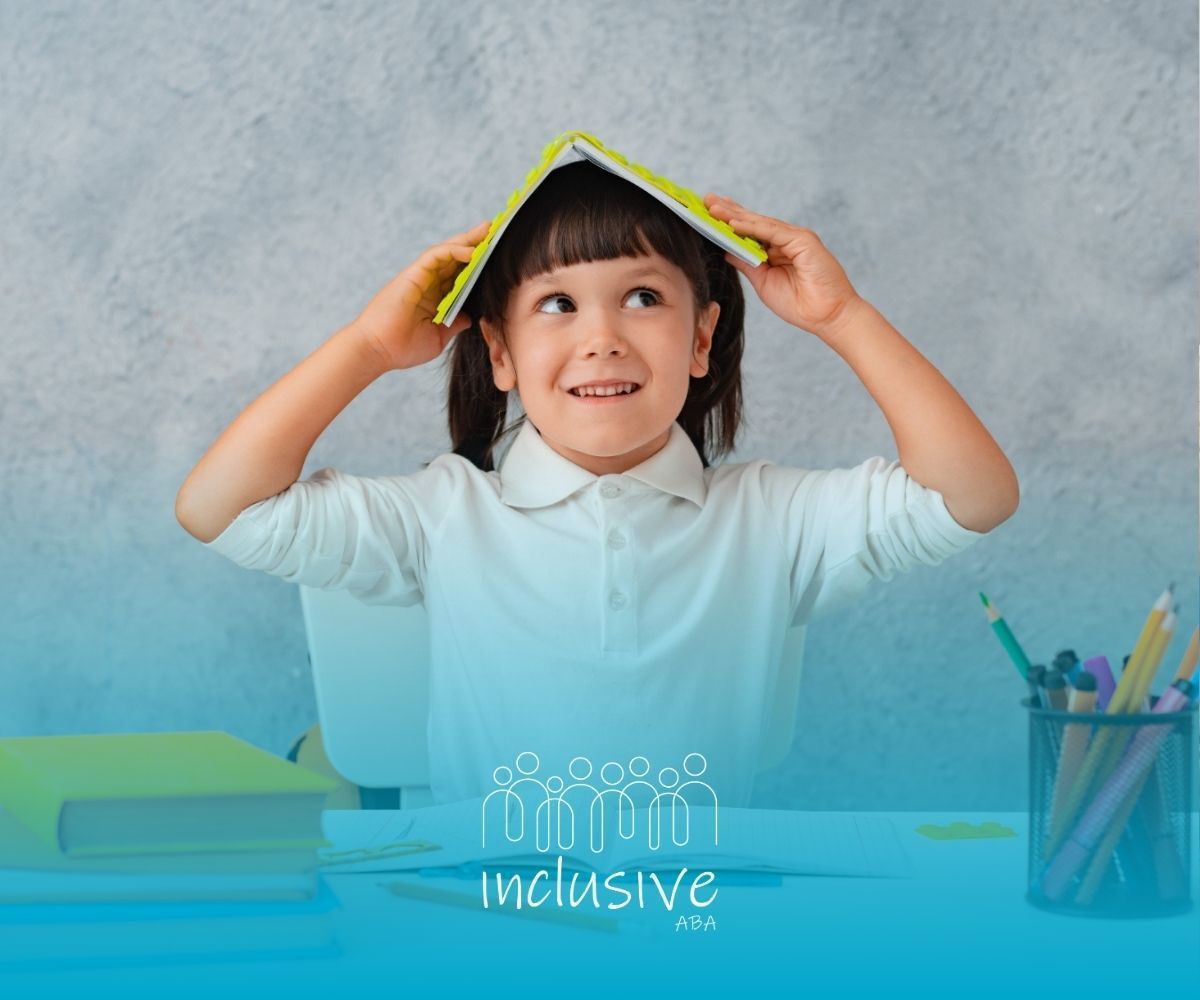
What to Expect in ABA Therapy: Activities That Help Kids Thrive
When considering ABA therapy for your child, you might be wondering: What do kids do in ABA therapy? ABA (Applied Behavior Analysis) therapy is a structured, evidence-based approach designed to help children—especially those with autism—develop essential life skills. But what exactly happens during these sessions?
ABA therapy sessions are filled with fun, engaging, and carefully structured activities tailored to each child's needs. From communication exercises and social skill-building games to sensory play and daily living tasks, every activity serves a specific purpose. In this article, we'll take an inside look at the different activities that make ABA therapy so effective, helping children learn, grow, and thrive in a supportive environment.
ABA Therapy and Kids
Understanding ABA Therapy for Children
Applied Behavior Analysis (ABA) therapy is a structured approach designed to improve behaviors and skills in children, particularly those with Autism Spectrum Disorder (ASD). It focuses on teaching functional skills and reducing harmful behaviors through positive reinforcement and tailored interventions. During ABA sessions, therapists utilize various strategies to promote learning and development, ensuring that the activities are engaging and beneficial for your child.
ABA therapy activities for kids are customized to meet individual needs. These can range from simple tasks aimed at improving communication to more complex activities that target social skills and behavior management. Engaging in these activities helps children learn new skills and practice them in safe, supportive environments.
Importance of Activities in ABA Therapy
Activities play a vital role in ABA therapy as they provide opportunities for children to practice essential skills in a meaningful context. By incorporating play and interactive tasks, therapists can create a diverse and stimulating learning experience. Here are some key reasons why activities are important in ABA therapy:
- Skill Development: Activities allow children to learn and refine various skills, such as communication, social interactions, and daily living tasks.
- Motivation and Engagement: Fun and interactive activities help maintain your child's interest and motivation during therapy. When children are engaged, they are more likely to participate and learn effectively.
- Generalization: Practicing skills in different settings and scenarios helps children transfer what they have learned to real-life situations. This skill generalization is crucial for long-term success.
- Positive Reinforcement: Activities often involve positive reinforcement techniques, encouraging your child to continue displaying desirable behaviors and to try new things without fear.
- Building Relationships: Interactive activities foster rapport between therapists and children, creating a trusting and supportive environment that enhances learning.
In summary, the activities that occur during ABA therapy sessions are carefully designed to promote growth and development. They serve to engage children, build essential skills, and create a positive learning environment that supports their overall progress in therapy.
Sensory Activities
Sensory activities play a critical role in ABA therapy by engaging your child’s senses and supporting their development. Through structured sensory integration and expressive sensory play, children can explore their surroundings, learn new skills, and enhance their overall development.
Sensory Integration Activities
These activities focus on helping your child process and respond to sensory information. By providing exposure to different textures, sounds, and smells, you can support their sensory processing skills.
Common sensory integration activities include:
- Playdough Manipulation: Rolling, squishing, and shaping playdough can strengthen fine motor skills while providing tactile feedback.
- Feely Boxes: Filling boxes with various materials (e.g., rice, beans, sand) allows children to explore textures and develop descriptive vocabulary.
- Water Play: Simple activities like pouring, splashing, or using tools in water can enhance sensory exploration and coordination.
Sensory Play for Exploration
Sensory play allows your child to discover different elements of their environment through hands-on experiences. This type of play encourages exploration and creativity, fostering cognitive and sensory development.
Activities that promote sensory play include:
- Nature Walks: Collecting leaves, rocks, or flowers during walks creates opportunities for discussing colors, shapes, and sizes while experiencing the outdoors.
- Sensory Bins: Creating bins filled with sand, water beads, or foam provides a variety of textures for exploration and imaginative play.
- Art Activities: Painting with a variety of materials (sponges, brushes, fingers) can stimulate creativity while offering sensory experiences through colors and textures.
These therapeutic activities are designed to engage your child in ways that promote learning and development while ensuring they are having fun. Your involvement and observation during these activities can help you gauge your child's progress and sensory preferences.
Social Skills Development
Social skills development is an essential component of ABA therapy for kids. Engaging in various activities helps children learn how to interact with peers, express themselves, and navigate social situations effectively. Two prevalent types of activities in this area are role-playing and pretend play, as well as group activities for social interaction.
Role-Playing and Pretend Play
Role-playing and pretend play are valuable ABA therapy activities that allow children to practice social scenarios in a safe environment. During these activities, children take on different roles and act out situations they may encounter in everyday life, such as sharing toys, asking for help, or solving a problem with a friend.
These activities foster creativity and imagination while providing opportunities for kids to develop their communication skills, emotional understanding, and empathy. As children act out different roles, they learn to recognize social cues and appropriate responses, which enhances their ability to engage in real-world social interactions.
Parents can facilitate these activities at home by encouraging their children to create their own stories or scenarios. Using props, costumes, or puppets can make these experiences more engaging and fun.
Group Activities for Social Interaction
Group activities are another effective way to encourage social skills development in ABA therapy. These activities can be structured games, team-based tasks, or collaborative projects that require children to work together towards a common goal.
Examples of group activities include:
- Team-building exercises: These activities can involve problem-solving tasks where children must communicate and collaborate to find a solution.
- Circle time discussions: In a group setting, children take turns sharing thoughts or feelings, promoting active listening and respectful communication.
- Group games: Cooperative games that require teamwork enable kids to practice sharing, taking turns, and supporting one another.
Engaging in group activities helps children learn the importance of social norms, such as taking turns, waiting for their turn to speak, and being considerate of others. You can encourage your child to participate in community programs, playdates, or classes where they can interact with peers in a structured environment.
Both role-playing and group activities serve as effective ABA therapy activities for kids, catering to their social development needs while ensuring fun and engaging experiences. By incorporating these activities, you can reinforce the skills learned during therapy in everyday situations, enhancing your child's overall growth and understanding of social dynamics.
Communication and Language
In ABA therapy, enhancing communication and language skills is a vital aspect of helping children express themselves effectively. Through various engaging activities, your child can develop essential language abilities and build confidence in their communication.
Storytelling and Narrative Building
Storytelling is an excellent way to foster language development and encourage creativity. During sessions, you may find your child participating in activities that involve creating stories or retelling familiar tales. This not only helps with vocabulary expansion but also enhances listening and comprehension skills.
You can encourage storytelling at home by:
- Asking open-ended questions about their favorite stories
- Encouraging them to illustrate their tales
- Using props or toys to act out scenes
These methods create an interactive experience that makes language learning enjoyable.
Language Development Through Play
Play is a powerful tool for language learning in children. In ABA therapy, you will observe your child engaging in various playful activities designed to boost their communication skills. These may include:
- Role-playing: Acting out different scenarios aids in understanding social cues and appropriate language use.
- Games with rules: Board games or card games that require communication can enhance vocabulary and conversational skills.
- Interactive apps: Technology can also play a role, with many applications designed to promote language development through fun and engaging activities.
In these contexts, your child learns to use language effectively, express their thoughts, and interact with peers.
Behavior Management
Effective behavior management is a crucial component of ABA therapy. It helps children learn appropriate behaviors and fosters positive interactions. Two key approaches in this area are positive reinforcement activities and redirecting challenging behaviors.
Positive Reinforcement Activities
Positive reinforcement is a technique used to encourage desirable behaviors by rewarding them. This method can help children understand the benefits of exhibiting appropriate actions. In ABA therapy sessions, you might observe several activities focused on reinforcing positive behavior.
Activities may include:
- Token Systems: Children earn tokens for completing tasks or demonstrating good behavior. Tokens can be exchanged for a reward.
- Praise and Rewards: Verbal praise and tangible rewards, such as stickers or small treats, are given when a child meets a specific goal or behaves positively.
- Praise Scripts: Practicing specific phrases that adults can use to commend the child on their achievements.
Redirecting Challenging Behaviors
Redirecting challenging behaviors involves guiding your child away from undesired actions and toward more appropriate ways to express themselves. This approach helps manage behaviors without punishment, allowing children to learn more suitable alternatives.
Common techniques include:
- Distraction: Introducing a new activity or toy when a child displays challenging behavior to shift their focus.
- Modeling Appropriate Behavior: Demonstrating the desired behavior for the child to imitate.
- Providing Choices: Allowing your child to choose between two appropriate options, giving them a sense of control while steering them away from unwanted actions.
These strategies are essential in ensuring that your child benefits from their ABA therapy sessions while enhancing their overall development and behavior management skills. By implementing these activities, you can support your child's growth in a positive and constructive manner.
Cognitive Development
Cognitive development plays a crucial role in ABA therapy, helping children enhance their thinking, problem-solving, and decision-making skills. Engaging in specific activities can foster these skills in a fun and effective way.
Problem-Solving Games
Problem-solving games are excellent for promoting critical thinking in children. These games encourage kids to think logically and creatively while navigating challenges. Some examples of problem-solving games include puzzles, scavenger hunts, and interactive apps that require strategic planning.
Benefits of problem-solving games include:
- Enhancing logical reasoning skills
- Encouraging persistence and resilience
- Improving focus and attention
Cognitive Skill-Building Activities
Cognitive skill-building activities help strengthen a child’s mental skills, such as memory, attention, and reasoning. These can include activities like memory matching games, categorization tasks, and storytelling exercises that require sequencing information.
Benefits of cognitive skill-building activities include:
- Boosting memory retention
- Enhancing language skills
- Promoting creative thinking
Incorporating these activities into ABA therapy can effectively boost your child’s cognitive skills, helping them thrive both within therapy sessions and in daily life.
Conclusion
ABA therapy isn't just about learning—it’s about growing, exploring, and having fun while developing essential life skills. Whether through play-based activities, social interactions, or structured lessons, children in ABA therapy gain confidence, independence, and the ability to navigate the world more effectively.
At Inclusive ABA, we’re committed to helping your child reach their full potential with personalized, engaging, and effective therapy sessions. Ready to learn more? Contact us today to explore how Inclusive ABA can support your child’s growth and success!
FAQs
What are the most common activities in ABA therapy?
ABA therapy includes activities like structured play, social interaction exercises, sensory activities, and daily life skill-building tasks to help kids learn.
How does ABA therapy help with communication and social skills?
ABA therapy uses role-playing, interactive games, and structured conversation exercises to improve a child’s ability to communicate and engage with others.
Can ABA therapy be fun for kids?
Yes! Therapists use play-based learning, engaging activities, and positive reinforcement to ensure that therapy is both enjoyable and effective.
Looking for Expert Help? We're Here for You!
Our compassionate and skilled team is devoted to enhancing your child's development through customized ABA therapy. Let us partner with you to create a supportive environment for your child's success.
Discover how we can help your family thrive with expert ABA therapy.
Send a Fax
303-616-1189
Mon-Fri: 9Am to 5.30 Pm
Sat- Sun: Closed












